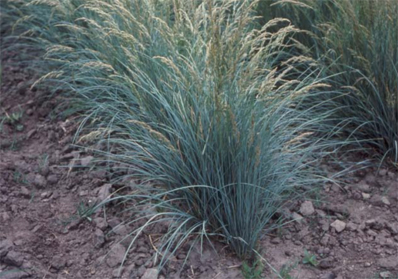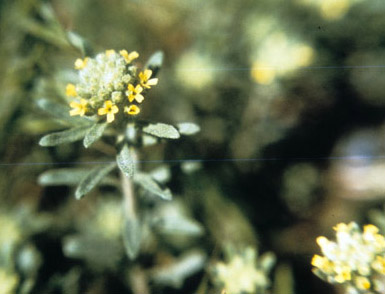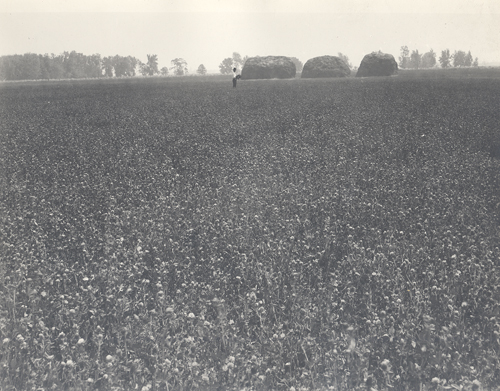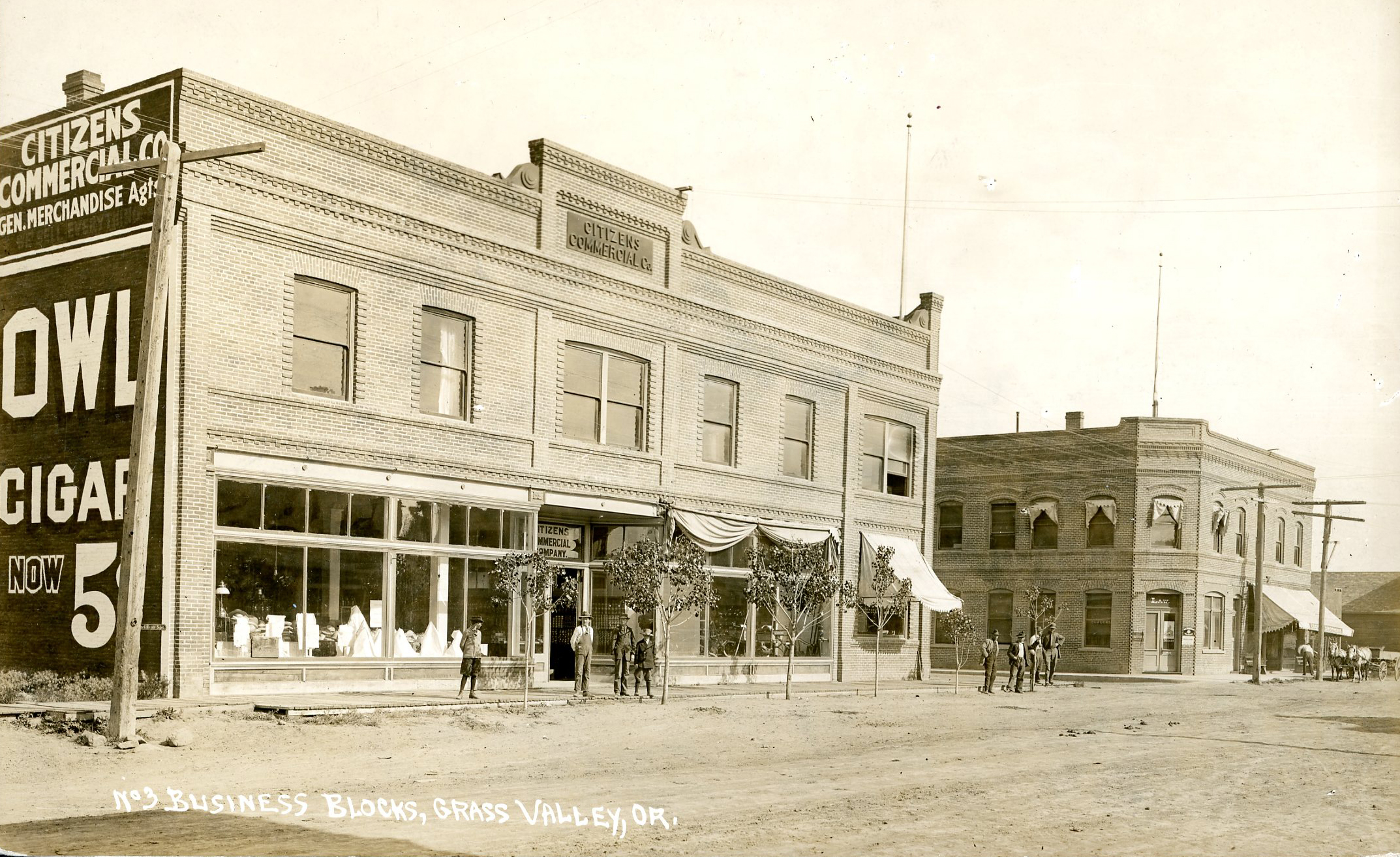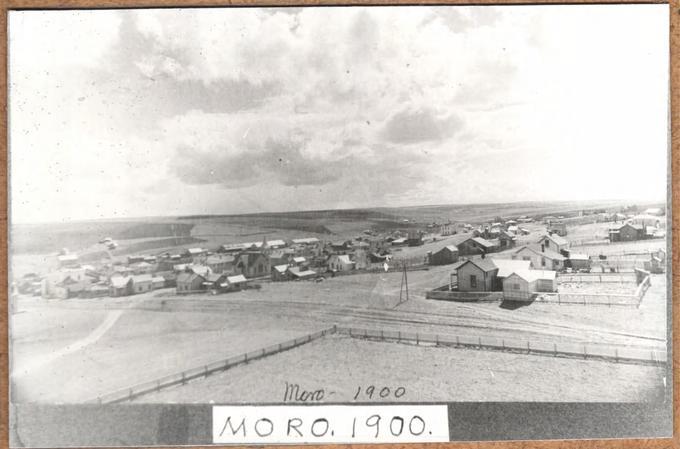Sherman Big Bluegrass (Poa secunda, formerly P. ampla) is a perennial bunchgrass with distinct blue, moderately abundant leaves and a large, compact seed head. The grass occurs on sagebrush slopes on mid-elevation meadows and upland sites, in openings in aspen stands, and in ponderosa pine and lodgepole pine forests. Sherman Big Bluegrass provided forage and habitat for wildlife on the Columbia Plateau long before non-Native resettlers arrived with livestock.
In 1932, David E. Stephens, superintendent of the Sherman Branch Experiment Station in Moro, collected and planted seed from the native grass range between Grass Valley and Moro. After successful plantings and harvesting at the SBES, the U.S. Department of Agriculture planted the seed at multiple locations, including the USDA-Soil Conservation Services Plant Materials Introduction Station in Spokane, Washington. In 1945, the U.S. Department of Agriculture named the grass Sherman Big Bluegrass and released the seed into the market. Today, it is the only named cultivar of big bluegrass sold on the commercial market.
Sherman Big Bluegrass has fine, smooth stems and grows to a height of twelve to twenty-four inches. The leaves are basal and vary between eight and fourteen inches long. It begins growth early in the spring, as many as four weeks earlier than crested wheatgrass, and the length of a seed is just three-sixteenths of an inch. No awns—stiff bristles that often grow grasses—are present. There are approximately 926,000 seeds per pound, and the plant can live for more than thirty years. Recruitment from shattered seed is very good, and the ease of establishment is moderate.
The grass can be seeded alone, but it is more commonly seeded with other grasses, such as Idaho fescue, bluebunch wheatgrass, Snake River wheatgrass, and basin wild rye. It also can be sown with forbs and legumes and is best adapted to well-drained soils in areas that receive nine to twenty inches of rainfall a year.
Sherman Big Bluegrass is used for a variety of purposes in the western United States. Federal agencies such as the USDA and state departments of Forestry and Transportation use the grass to control erosion and to compete against invasive grasses such as cheatgrass. Farmers throughout the Columbia Basin plant the grass for livestock forage and on roadsides to reduce erosion and minimize the amount of cheatgrass. In the twenty-first century, Sherman Big Bluegrass is important for erosion control, rangeland reseeding, forage, dry-land hay, upland wildlife habitat, grazing, stabilization of critical areas, invasive plant suppression, and the reclamation of mine spoils.
-
![]()
Sherman Big Bluegrass.
Courtesy U.S. Department of Agriculture
Related Entries
-
![Alyssum]()
Alyssum
Until recently, the genus Alyssum in the Mustard family (Cruciferae or …
-
![Grass seed industry]()
Grass seed industry
The Willamette Valley, with its temperate climate, wet winters, and ari…
-
![Grass Valley]()
Grass Valley
Early EuroAmericans traveling through north-central Oregon just east of…
-
![Moro]()
Moro
The town of Moro, the county seat of Sherman County, is located about e…
Related Historical Records
Map This on the Oregon History WayFinder
The Oregon History Wayfinder is an interactive map that identifies significant places, people, and events in Oregon history.
Further Reading
Hawk, Virgil B. “Summary of Value of Grasses and Legumes Under Moro Conditions.” USDA-Soil Conservation Service, Pullman, Wash.: 1938
Sherman Experiment Station Annual Reports: 1930-1948.
United States Department of Agriculture, Natural Resources Conservation Service.

